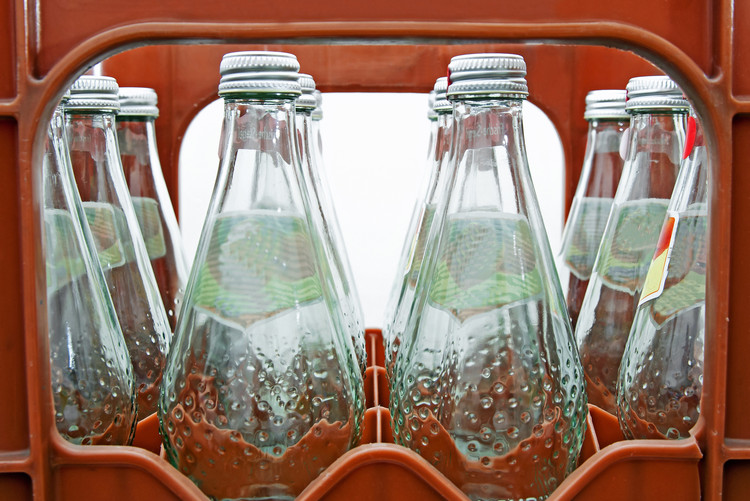Pressemitteilung
Circular Economy Action Plan paves the way for more waste prevention and recycling: Commission must define measures to promote reuse
Berlin, 16.3.2020: On 11 March 2020, the European Commission put forward a new action plan, announcing unprecedented steps towards a true circular economy. The Circular Economy Action Plan (CEAP) contains measures to promote waste prevention, longer product life, high quality recycling, better consumer information and Green Public Procurement. It aims at guiding the EU away from the current linear economy model and towards resource conservation, climate protection and increased competitiveness. Environmental Action Germany (Deutsche Umwelthilfe, DUH) welcomes the Commission’s goal to reduce residual waste by 50 percent, implement mandatory targets for recycled content and restrict unnecessary (over)packaging.
DUH calls on the Commission to define verifiable quantitative targets and concrete deadlines for the transposition of the announced regulations. The environmental and consumer protection association criticises the fact that the CEAP lacks a comprehensive approach to effectively curb the consumption of single-use packaging, which above all requires concrete reduction and reuse targets. Furthermore, the plan fails to define reduction targets for overall resource consumption and a landfill ban on untreated and recyclable waste. Commissioner Sinkevicius urgently needs to revise the CEAP if he is serious about guiding the EU towards a true circular economy.
"The Commission is sending out a strong signal – national governments can no longer ignore the EU waste hierarchy with its focus on prevention, repair and reuse. Now, the EC must quickly define concrete and effective measures, as well as a detailed timetable for their transposition. Binding quantitative reduction and reuse targets are long overdue. High quality recycling has its place, but we cannot recycle our way out of the problem”, says DUH Deputy General Director Barbara Metz.
Packaging accounts for 40 percent of the European plastic consumption, with only a negligible portion of it being reused. Currently, every EU citizen generates 170 kg of packaging waste per year. For a sustained reduction of unnecessary single-use packaging, the EU needs legally binding waste reduction targets. Environmental Action Germany suggests a decrease of packaging waste by 25 percent until 2025 and 50 percent until 2030. Furthermore, the EU must adopt ambitious measures to promote reuse systems for packaging. Reusable packaging reduces waste at source, protects the climate, and strengthens regional economic cycles.
“Successful reuse systems for packaging exist all over Europe. In Germany, refillable bottles are reused up to 50 times. One 0.7 litre refillable water bottle replaces 30 1.5 litre single-use plastic bottles and emits 50 percent less CO2. To establish themselves on the market, environmentally friendly reuse systems need to be supported by adequate legislation. It is completely incomprehensible why the Commission is still hesitant with regard to quantitative targets. EU-wide binding reuse targets for consumer, sales and shipment packaging would create a safe environment for investments, especially for SMEs and regionally operating companies. Romania is leading by example, with reuse targets for all packaging in place since January 2020. In Germany, there is a reuse target of 70 percent for beverage packaging. That should be the norm in the EU”, Metz says.
Beyond beverage packaging, a reuse target of 25 percent by 2025 and 40 percent by 2030 should be set for sales packaging. For transport packaging, a reuse rate of 70 percent should apply from 2025. Additional measures to promote reusable packaging include fiscal and other financial incentives, adequate labelling as well as provisions for public procurement, events and on-site consumption. DUH has published a comprehensive paper with policy recommendations to promote the reuse of packaging.
“As promising as the new CEAP is, it has some further shortcomings. If the Commission is serious about resource and climate protection, it needs to, once and for all, put a stop to the landfilling of untreated municipal and industrial waste with recyclable content. By not addressing this issue, the Commission is completely undermining its own efforts to foster high quality recycling across the EU. Furthermore, the CEAP fails to set clear targets and measures to sustainably reduce overall resource consumption and make virgin materials more expensive. Regarding our planetary boundaries, this would have been absolutely necessary”, criticises Thomas Fischer, Director Circular Economy at DUH.
DUH is an active member of the global #breakfreefromplastic movement.
Further information:
- DUH policy paper on reuse: see below
- More information on the environmental benefits of refillable bottles: https://www.duh.de/mehrweg-klimaschutz0/refillable-bottles-for-climate-protection/
- More information on the #breakfreefromplastic movement: https://www.breakfreefromplastic.org/
Contact:
Barbara Metz, Deputy General Director
+49 (0) 170 7686923, metz@duh.de
Thomas Fischer, Director Circular Economy
+49 (0) 30 2400867-43, +49 (0) 151 18256692, fischer@duh.de
Henriette Schneider, Project Manager
+49 (0) 30 2400867-464, h.schneider@duh.de
DUH Press Office:
Marlen Bachmann, Thomas Grafe
+49 (0) 30 2400867-20, presse@duh.de
www.duh.de/englisch

